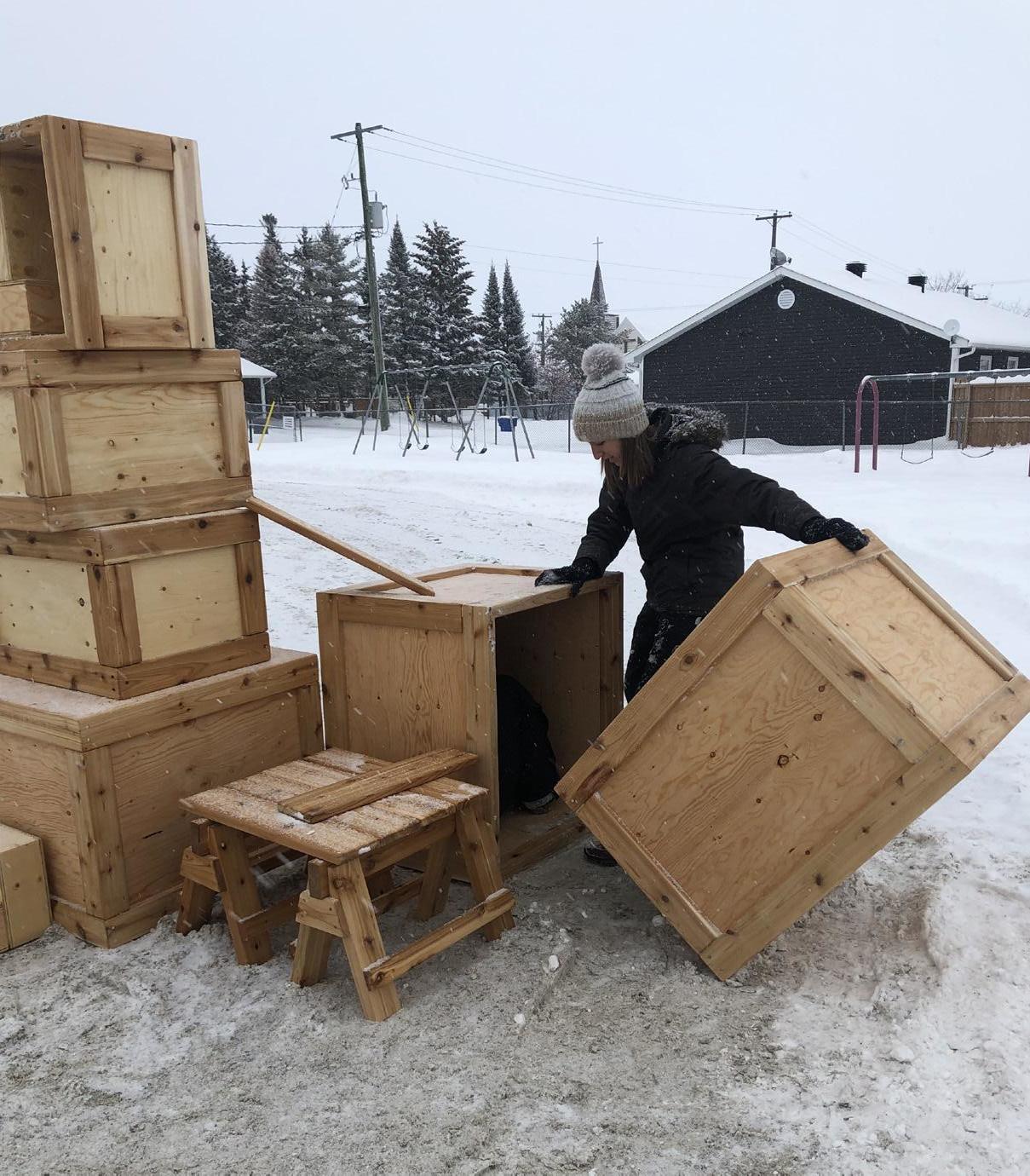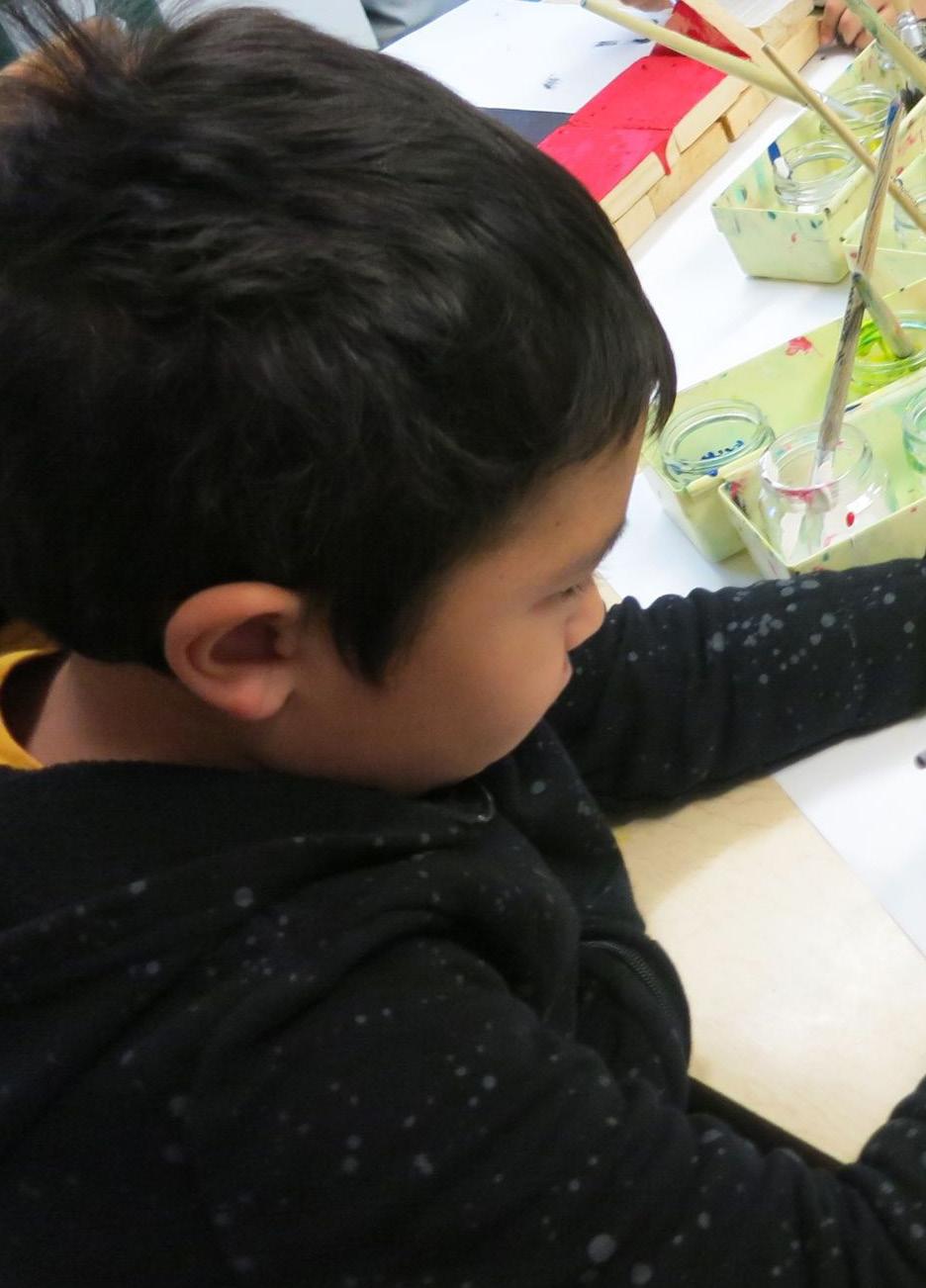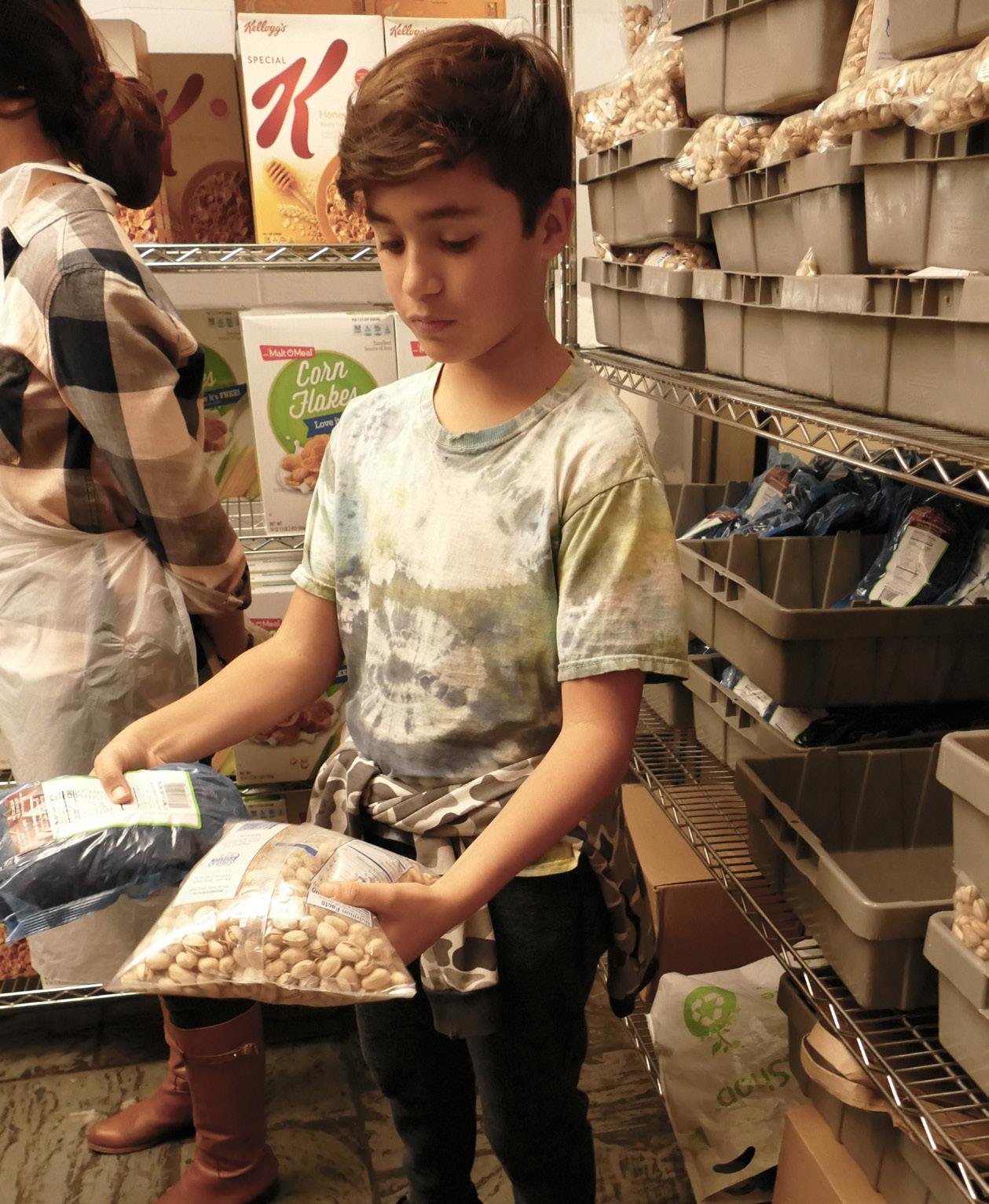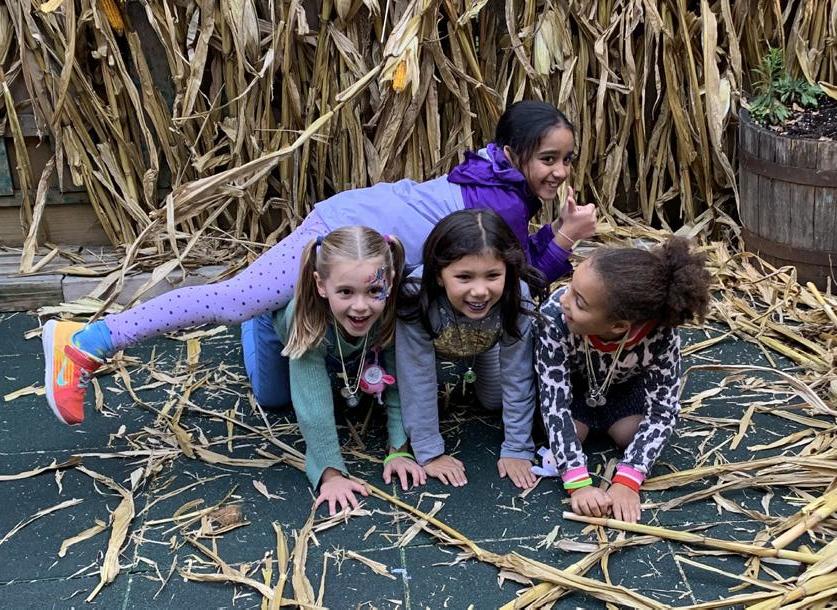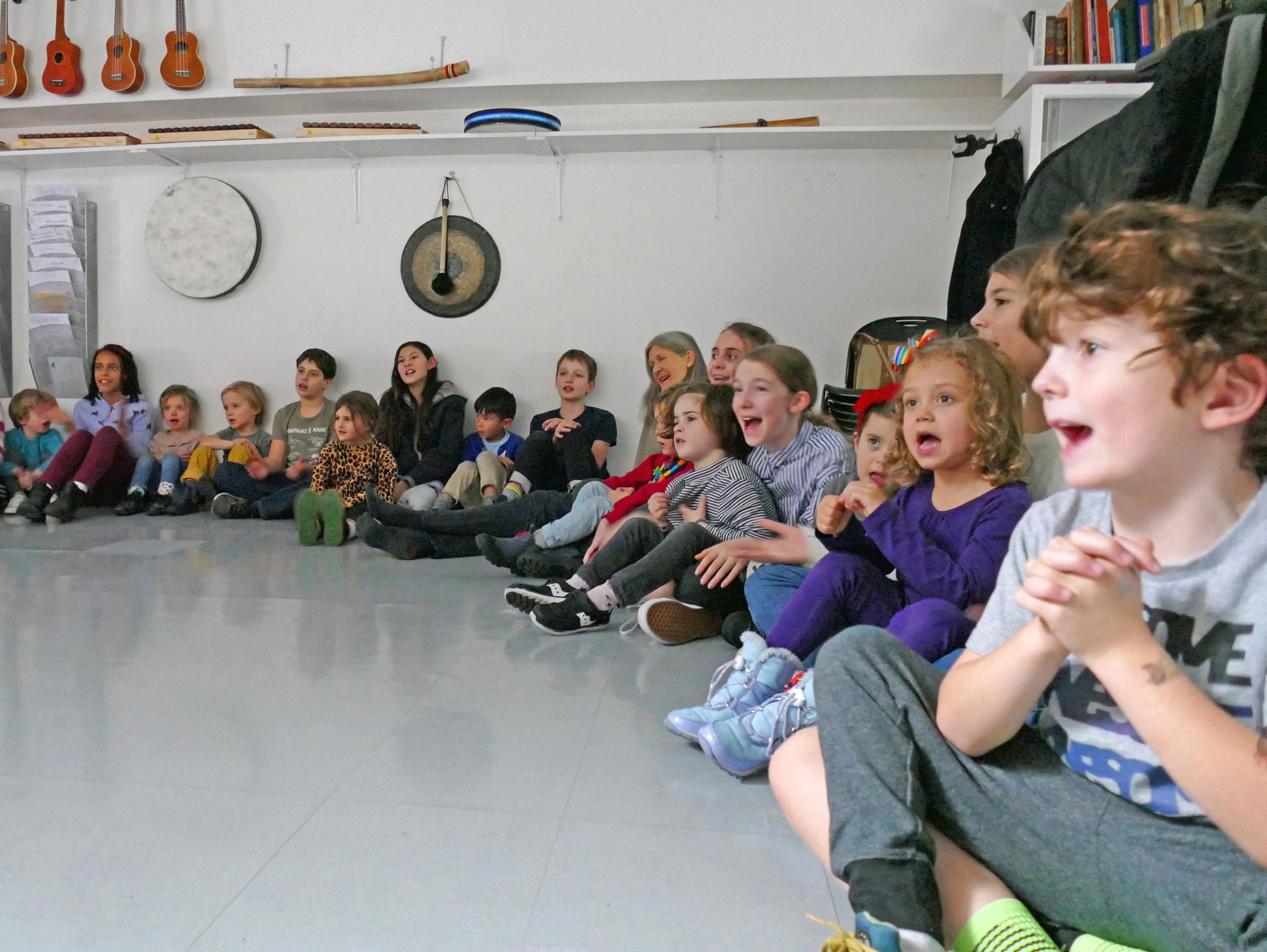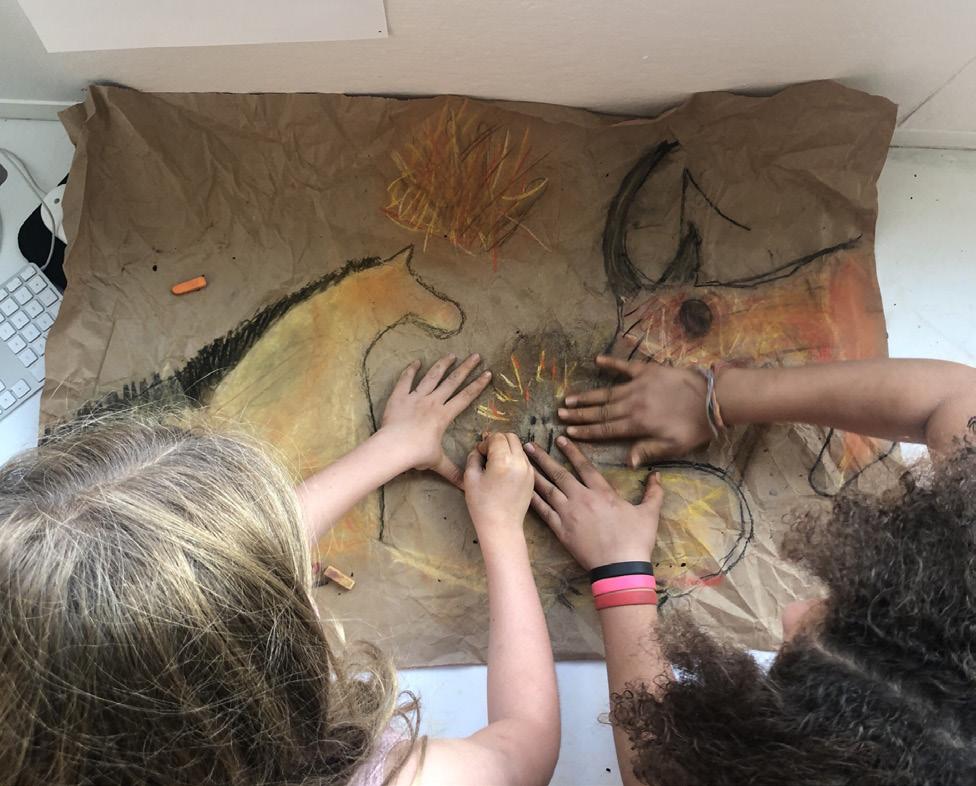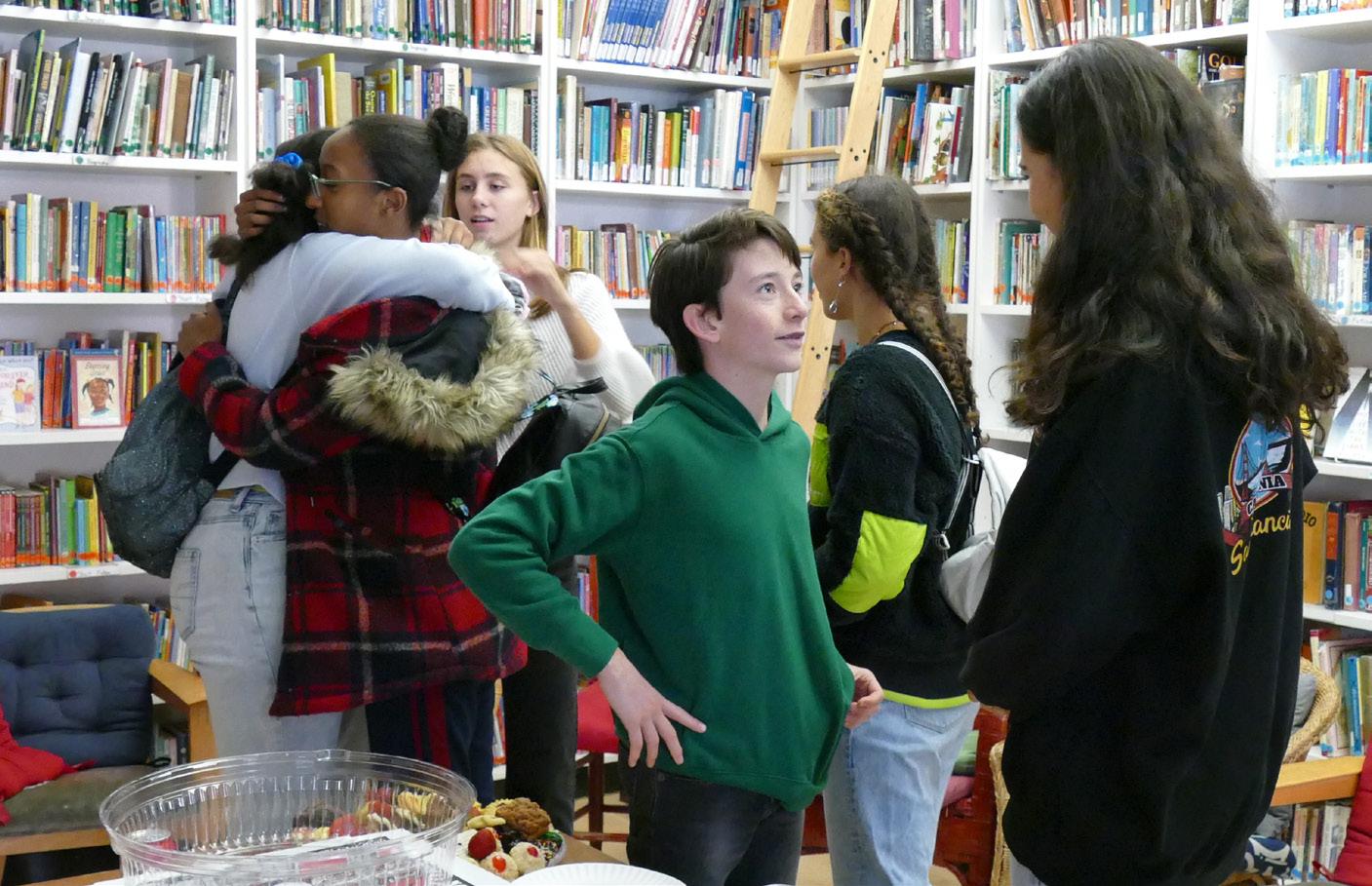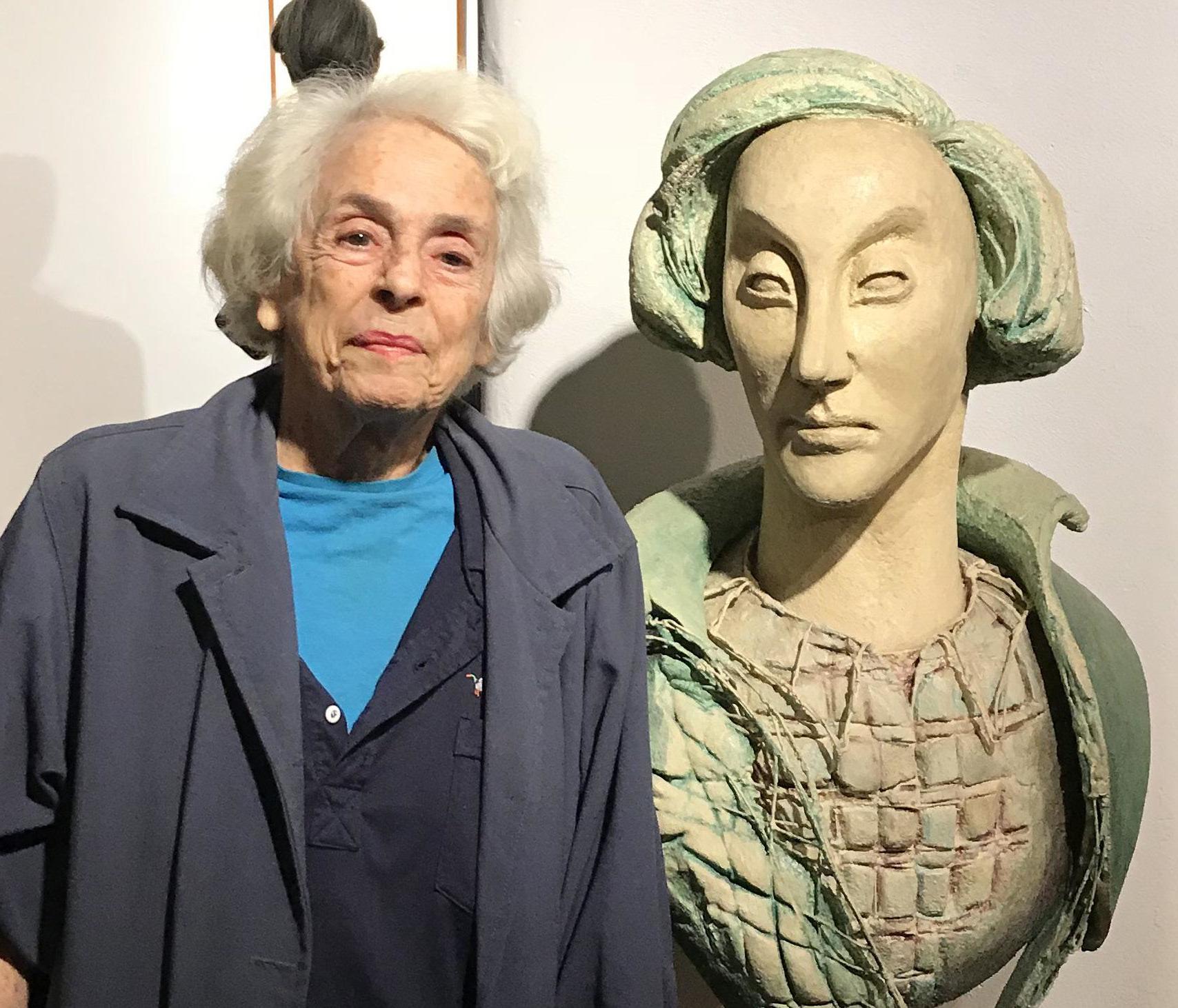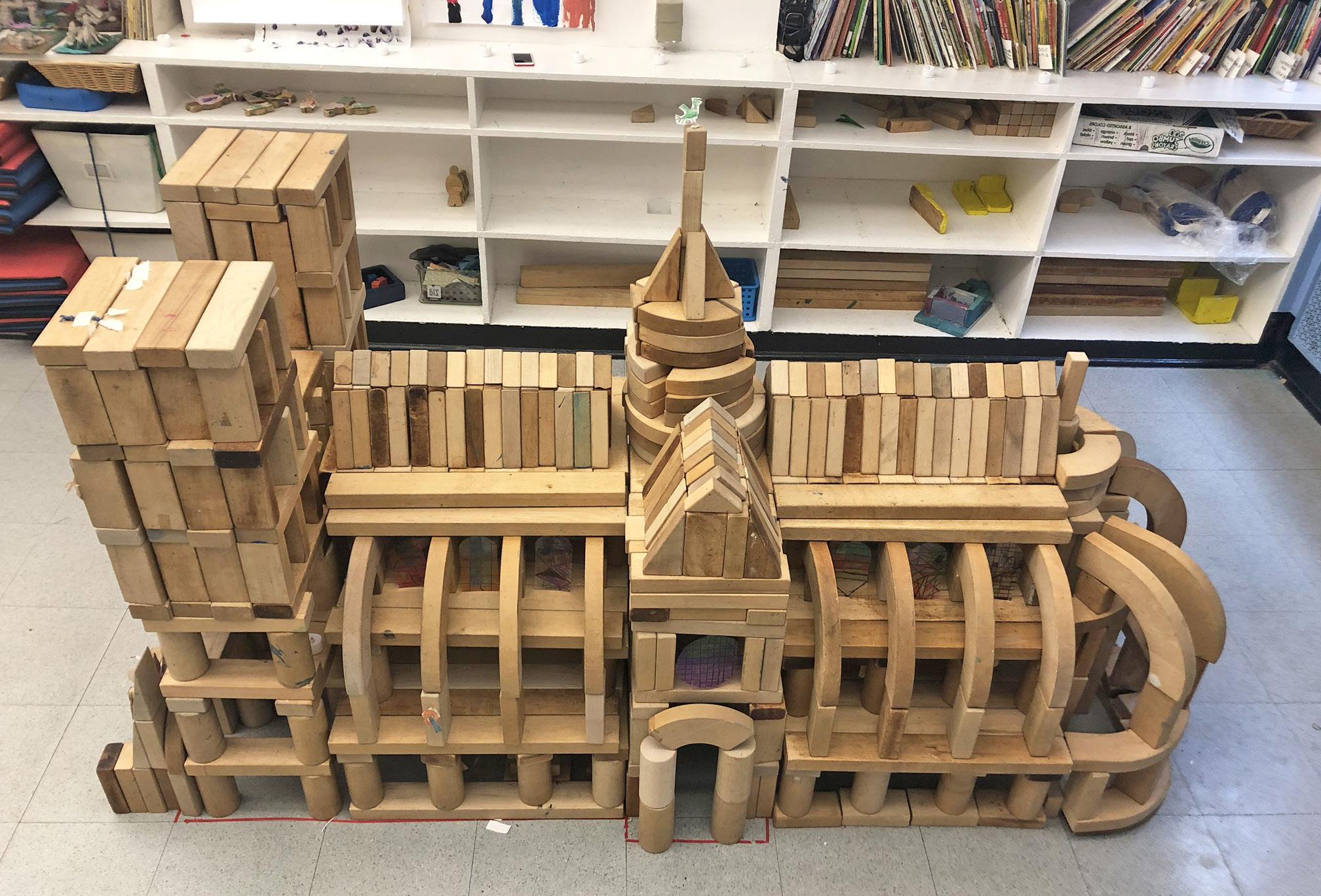
4 minute read
A Thoughtful Silence Bringing the Community Together in Contemplation
A THOUGHTFUL SILENCE
Bringing the Community Together in Contemplation
As Lama Wongdue gently tapped the funnel, red sand trickled onto the pencil-marked design outlined on the plywood base. Members of the City and Country community stood silently, contemplatively, in the Library as he finished yet another small element in the meditative work that had brought him to our School.
Over the course of six days, Lama Wongdue, a monk from the International Buddhist Academy in Kathmandu, Nepal, would create an intricate and highly symbolic geometric design composed of colored sand—the Tibetan Buddhist tradition of sand mandala.
Lhakpa Gurung, niece of Lama Wongdue and IVsL Associate Teacher, thought that C&C would be the perfect site for one of her uncle’s mandalas, and she helped arrange his visit to the School. “The sand mandala is an important reminder for us that it’s the process that’s important,” said Lhakpa. “It’s a way of meditating. But there are also connections to art, math, social studies, diversity, and religion in the mandala. I thought it might be beneficial for our school to experience.”
Lama Wongdue learned how to create sand mandalas as part of his Buddhist studies in India in his 20s. Since then, he has created 10 sand mandalas, some in monasteries for religious purposes, but also in public spaces in Switzerland and the United States for the purposes of education and world peace.
Each mandala is rich with religious symbolism, depicting the house of a deity. “Since C&C was a school setting,” said Lhakpa, “my uncle chose to create a Manjushree Mandala here, symbolizing the ‘goddess of wisdom.’” The colorful sand represents different directions, gems, and elements. “For instance, there are nine different colors of fire,” said Lhakpa. The structure of the house he created radiated outward in beautiful patterns.
DAY 1
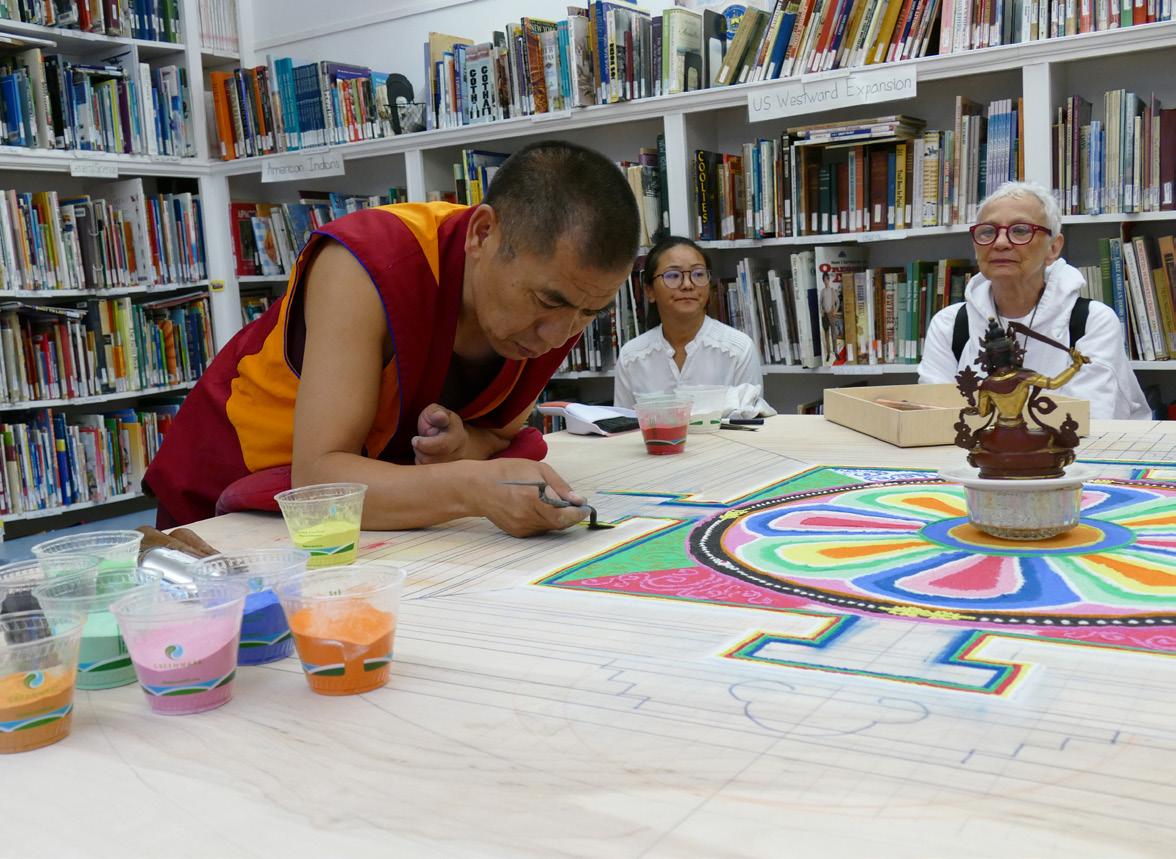
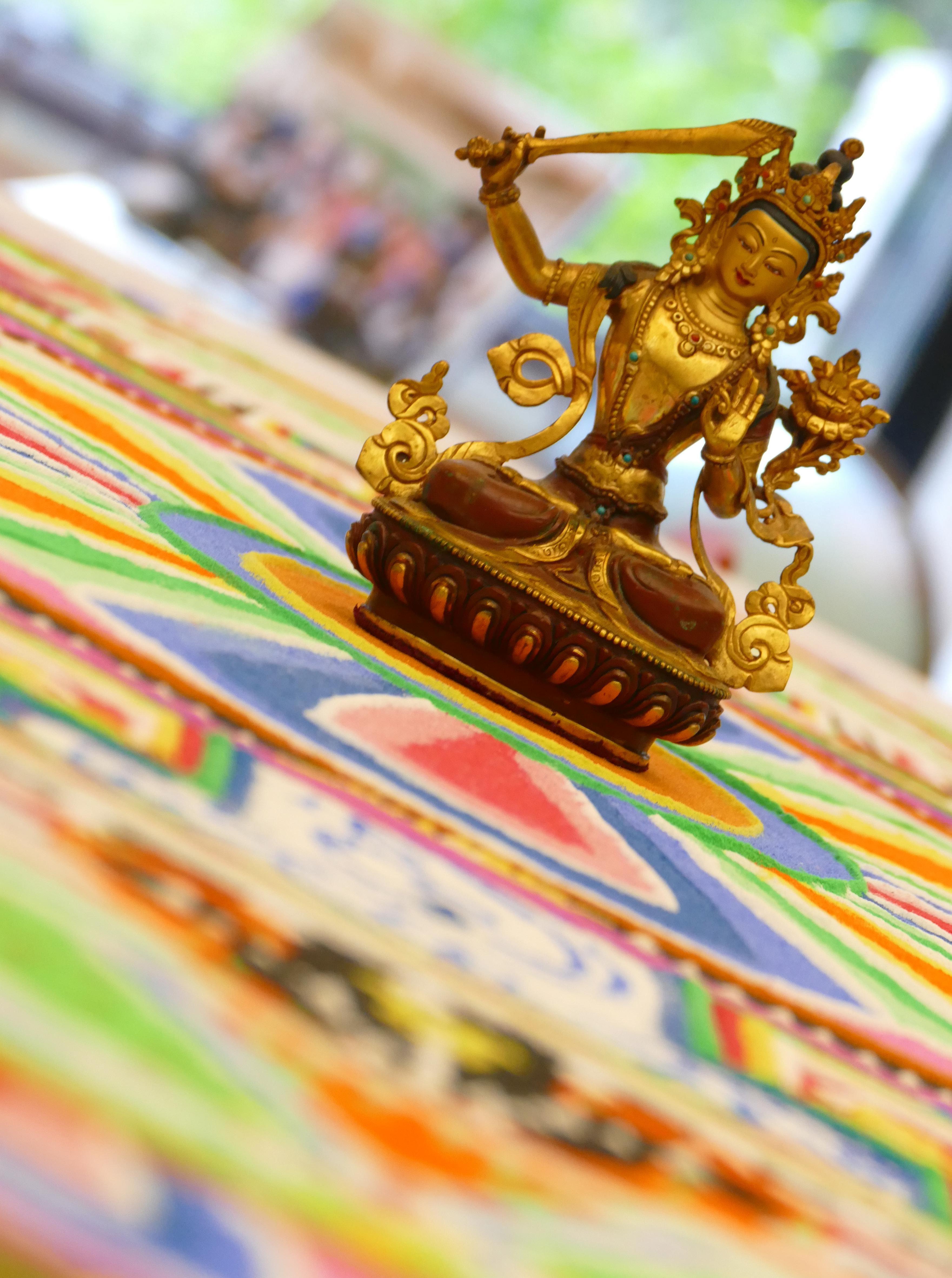
“It is like blocks. There is nothing there, and then you build, and then you put it away. And then it is done.” —CURRENTV
Lama Wongdue’s breathtaking and colorful work brought many members of the community together and evoked a myriad of insightful questions from our visitors and students.
Principal Scott Moran spoke of how the sand mandala resonated deeply with our community: “The mandala was a way for us to experience something that highlights curiosity, impermanence, peace, concentration, and
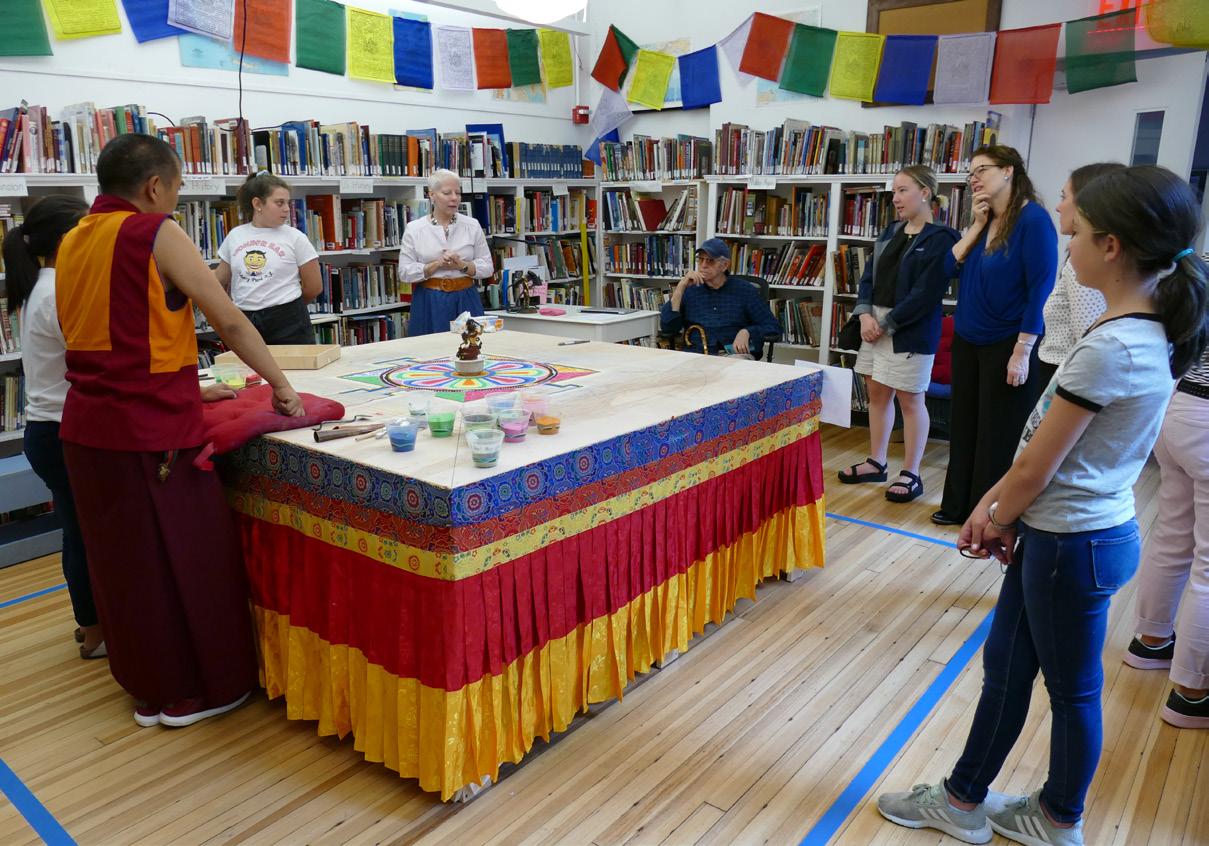
DAY 4
problem-solving—qualities and concepts that we encourage and interact with all the time, across our program. This was a whole-community event with a grounding force that resonated across the School.”
The sense of community was heightened by the location of the sand mandala, in what many would consider to be the heart of the School: the Library. Its doors were open, and all were welcomed in to observe the mandala’s creation. Students, teachers, staff, parents, alumni, and caretakers visited Lama Wongdue and his sand mandala throughout the process, and no matter their age, they all seemed to notice the importance of what was happening. Many fell silent as they entered the space, taking in Lama Wongdue’s work with quiet curiosity or contemplation, while others lifted the hushed atmosphere with their questions.
“One of the most moving parts of this process for me,” said Director of Lower School Jane Clarke, “was when several of our caregivers, who are originally from Nepal, came forward and shared what the experience meant to them. It was an opportunity for them to participate in our community in a new and profound way.” C&C alumni were also invited to witness the creation of the mandala. Alumnus Hilary Knight ’40,
DAY 5
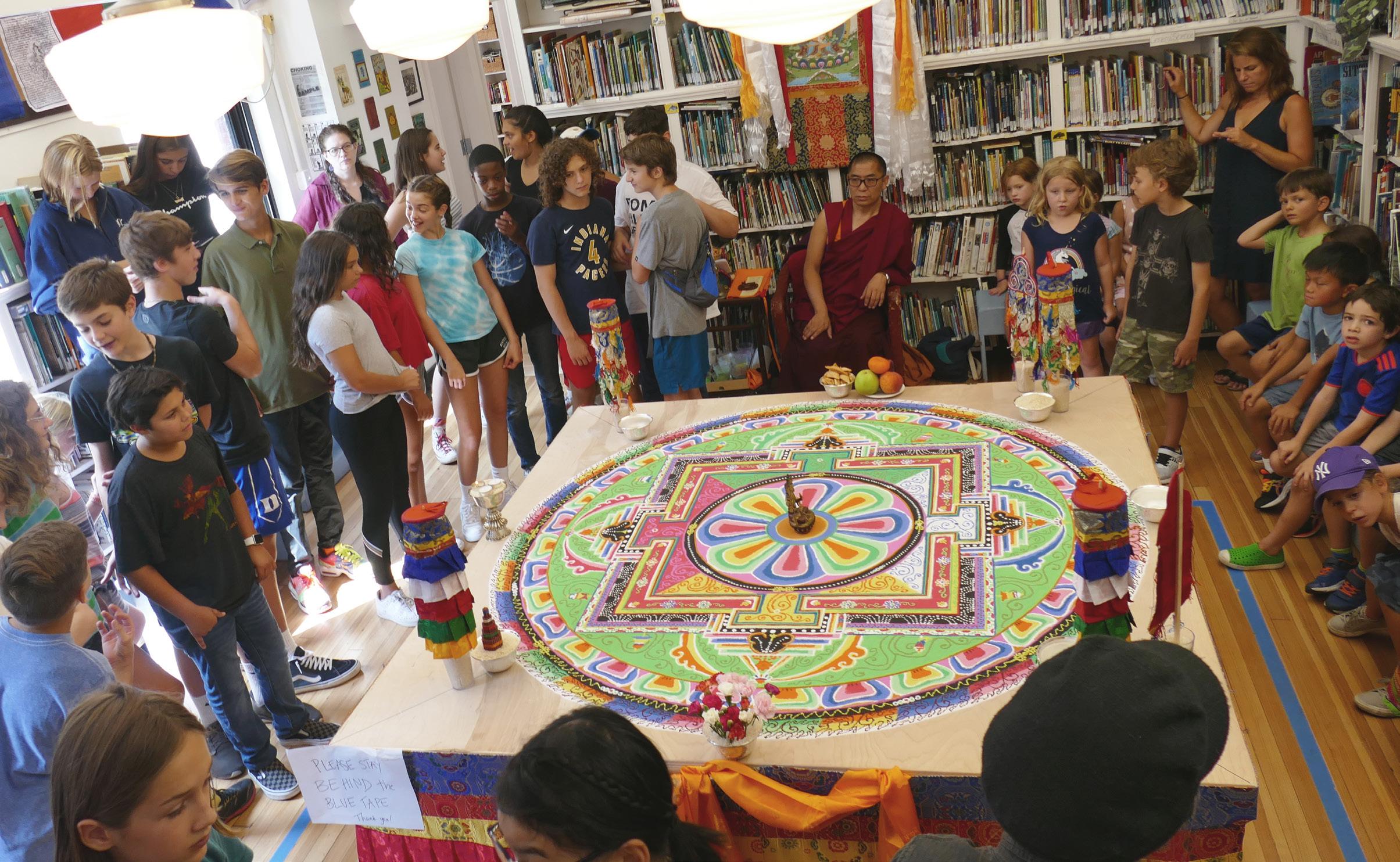
A XIII asked, “Do you feel sad when you destroy the sand mandala?” “No, not sad, not sad,” he replied. DAY 6
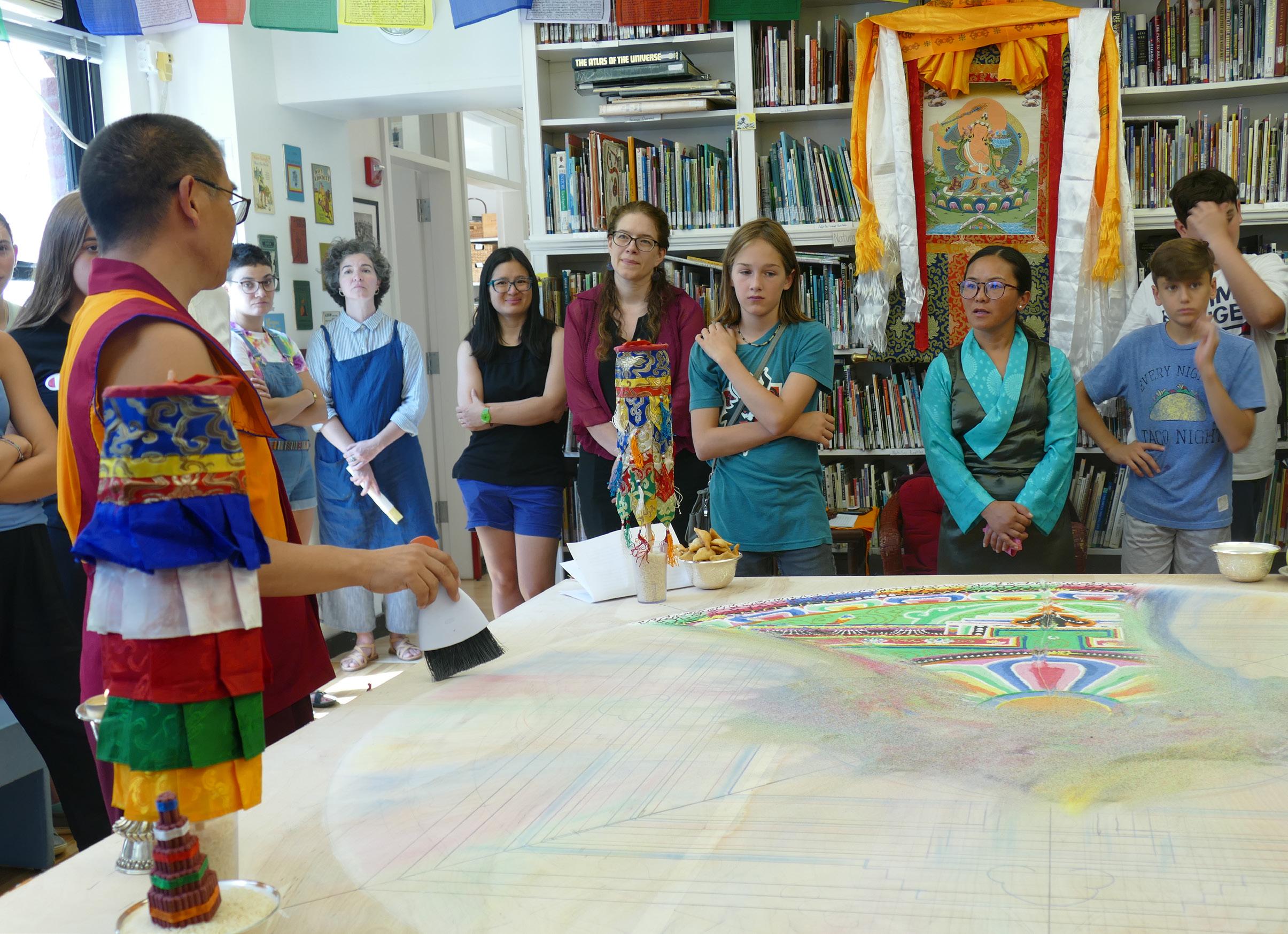
A time-lapse video captured the creation and completion of the sand mandala. Visit www.cityandcountry.org/videos to watch the six-day process from beginning to end.
upon seeing the mandala, said, “Little six-year-old Hilary Knight was in this very room in 1932, and I am sure I would have loved this event.”
At the end of his stay, Lama Wongdue was asked by a IX why he sweeps away the mandala when it is finished. He replied that it is about impermanence, that nothing is permanent, and that the mandala is not complete until it is swept away. It is not that it is finished and then swept away—the sweeping away completes it.
Scott related how Lama Wongdue’s own experience making the mandala reflected our School’s character. “I don’t think it’s an overstatement to say that he was floored by the level of curiosity and thoughtfulness that
he experienced from the children. He told me, ‘I didn’t know it was possible that children could have those kinds of questions about what I’m doing.’ This response underscores one of our core purposes as an independent progressive school: We get to show what’s possible when you start with engaging the curiosity in each child.”
Lama Wongdue completed the final ritual in his mandala shortly after the closing ceremony at C&C. He took a day trip to Lake Minnewaska, NY, and dispersed the sand used in the mandala back to the clean water. He asked Lhakpa to thank everyone for making his stay warm, welcoming, and educational, and we, in turn, thank him for sharing this wonderful and thought-provoking experience with our community.

